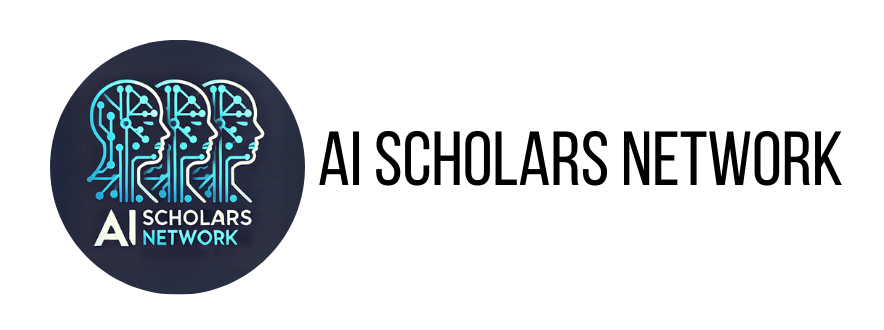AI in the Classroom: A Teacher’s Guide to 2025–2030
Introduction
Artificial intelligence is no longer a futuristic concept—it’s already reshaping classrooms, lesson plans, assessments, and even the way students learn to write or solve math problems. And it’s happening faster than many educators expected.
The next five years will bring the most rapid transformation teaching has seen in decades. But this isn’t about replacing teachers—it’s about redefining the role of teaching itself.
This guide is built for K–12 educators who want to understand where things are headed between now and 2030—what’s changing, what’s possible, and how to lead with clarity in the face of uncertainty.
If you’ve been curious, cautious, or overwhelmed by AI…
You’re in the right place.
Let’s explore how to use AI not just to keep up—but to teach with more purpose, personalization, and joy.
2025–2026: AI-Enhanced Teacher Workflows
What Changes
By 2026, the early wave of AI adoption in K–12 classrooms is focused on one goal: giving teachers more time to focus on students, not paperwork.
-
- AI assists with lesson planning, grading, and content differentiation
- Teachers begin relying on AI co-pilots for IEP support, assessment feedback, and student writing guidance
- Students increasingly use AI independently for practice, revision, and tutoring
- School leaders begin addressing equity, ethics, and oversight policies for responsible AI use
“AI will not replace teachers. But teachers who use AI will eventually replace those who don’t.”
— U.S. Department of Education, 2023
U.S. Department of Education: “Artificial Intelligence and the Future of Teaching and Learning” (May 2023)
https://www.ed.gov/sites/ed/files/documents/ai-report/ai-report.pdf
How AI Enables This
AI tools are becoming embedded in everyday teacher workflows—not replacing educators, but lightening their load.
-
- MagicSchool.ai, Eduaide.ai, and Diffit generate leveled texts, aligned quizzes, and scaffolds
- ChatGPT and Khanmigo support student writing, inquiry, and math practice
- AI-assisted grading tools provide quick feedback on rubrics, grammar, and structure
RAND’s 2024 research notes that AI tools are most effective when teachers have choice, context, and training to integrate them into instruction
RAND Corporation: “Using Artificial Intelligence Tools in K–12 Classrooms” (2024)
https://www.rand.org/pubs/research_reports/RRA956-21.html
Why It’s Happening
-
- Burnout relief: AI helps manage workload and improve retention
- Increased personalization expectations from parents and students
- Tools are now plug-and-play friendly—integrating into Google, Microsoft, and LMS platforms
“Educators need not become programmers—they need to become designers of learning supported by AI.”
— NEA Task Force on AI in Education, 2024
National Education Association (NEA): “Report of the NEA Task Force on Artificial Intelligence in Education” (April 2024)
https://www.nea.org/sites/default/files/202406/report_of_the_nea_task_force_on_artificial_intelligence_in_education_ra_2024.pdf
2027–2030: AI as Co-Teacher & Learning Companion
What Changes
By the late 2020s, AI becomes a visible, interactive presence in classrooms. It’s not replacing teachers—it’s co-teaching alongside them.
-
- AI delivers adaptive instruction, tutoring, and feedback
- Teachers shift into roles as facilitators, SEL coaches, and designers of interdisciplinary projects
- Classrooms become more like learning labs, with mixed modalities and flexible grouping
- Schools begin redesigning schedules, roles, and infrastructure to support new workflows
“AI can play a transformative role when paired with human-centered pedagogy. The future is not AI-led teaching—it’s AI-empowered learning.”
— UNESCO, 2024
UNESCO – Artificial intelligence in education
https://www.unesco.org/en/digital-education/artificial-intelligence
How AI Enables This
-
- Multimodal AI (text, video, audio, visuals) personalizes content for diverse learners
- AI tutors provide real-time practice, correction, and explanations
- Analytics dashboards help teachers intervene early and target supports
- AI copilots are embedded in widely used platforms (Microsoft 365, Google Workspace)
Digital Promise’s exploratory projects found that AI helped increase student agency, equitable feedback, and project-based learning outcomes
Digital Promise – Transforming K-12 Education with AI
https://digitalpromise.org/2024/10/23/transforming-k-12-education-with-ai-a-new-report-with-insights-from-28-exploratory-projects/
Why It’s Happening
-
- Staffing shortages require AI to scale instructional support
- Parental demand for personalization and flexible learning is rising
- Policy frameworks (e.g. MIT RAISE) recommend labeling, privacy, and oversight as AI becomes more common
MIT RAISE: “How Policy Can Help Ensure the Proper Use of AI in K-12 Education” (July 2024)
https://raise.mit.edu/wp-content/uploads/2024/07/AI-K-12_final-V3.pdf
SpringerOpen – AI literacy in K-12: a systematic literature review (2023)
https://stemeducationjournal.springeropen.com/articles/10.1186/s40594-023-00418-7
Conclusion
The Next 5 Years Will Belong to Educators Who Adapt—and Lead
The era of AI-powered teaching is here—and it’s moving fast. But it’s not about technology taking over. It’s about giving teachers better tools to do what they’ve always done best: connect, support, inspire, and lead learning with heart.
Between now and 2030, the classrooms that thrive will be those that embrace AI thoughtfully—not to cut corners, but to open new doors.
-
- Teachers will evolve into curators of content and designers of learning experiences
- Students will gain tools to write, question, and problem-solve more independently
- Schools will be challenged to lead with equity, ethics, and clarity as AI becomes part of daily instruction
The future of education isn’t written by algorithms.
It’s written by teachers—like you—who choose to lead the change.
Next Steps for Your Classroom
Explore these practical guides to start using AI confidently with your students.
Using AI to Streamline Lesson Planning, Grading & Differentiation
AI Co-Pilots for IEP Support, Assessment Feedback, and Writing Guidance
Empowering Students to Use AI for Writing, Inquiry, and Math Practice
